Tracking and Stalking
By Karen Berger
Illustrations by Martha Mitchell and courtesy of Lynn Levine
A field guide and magnifying glass can help you identify animal tracks in the wild or the critters running through your campsite.
Observing wildlife is a memorable part of any outdoors excursion, and spring is a good time to do it. As winter melts away, animals become more active, looking for mates and food. The ground, still covered with snow in northern areas, or wet from snowmelt and spring rains in warmer climes, is perfect for discovering animal tracks.
Tracking 101
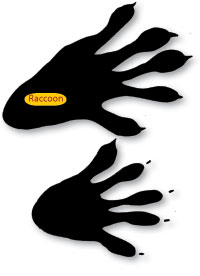 Animal tracks reveal more information than meets the eye. They not only identify an animal, they also show the direction it was traveling, how fast it was moving, and maybe even what it was doing or how it was feeling. The clearer the tracks, the more information you can glean. The best tracks are found in the soft, wet soil near the edges of ponds or waterways, in silted riverbeds, or in areas still covered with light snow.
Animal tracks reveal more information than meets the eye. They not only identify an animal, they also show the direction it was traveling, how fast it was moving, and maybe even what it was doing or how it was feeling. The clearer the tracks, the more information you can glean. The best tracks are found in the soft, wet soil near the edges of ponds or waterways, in silted riverbeds, or in areas still covered with light snow.
To identify these tracks, you should recognize both fore prints and hind prints. Tracks that look similar on first glance might be differentiated by their size. Other identity clues are claw length and shape, track width, and the straddle (the distance at the shoulder, indicated on the ground as the distance between the right and left tracks).
Expert trackers categorize animals by how they move. In her guide, Mammal Tracks and Scat: Life-size Tracking Guide (www.heartwoodpress.com), forester Lynn Levine explains that a rabbit is a hopper, a cat or a dog is a walker or trotter, a bear is a waddler, and a weasel is a bounder. Each leaves different types of tracks. For example, as a rabbit hops, its long back legs pass its front legs, so the hind-foot tracks are actually in front of the forefoot tracks. Understanding gaits helps identify tracks when the track itself is incomplete or hard to see.
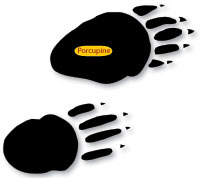 “The gait also tells the story of what the animal was doing,” Levine explains. She describes watching two sets of fox tracks come together. “The distance between the tracks was small, indicating that they were moving slowly, and then the tracks intertwined in a circle, finally showing where the foxes mated.”
“The gait also tells the story of what the animal was doing,” Levine explains. She describes watching two sets of fox tracks come together. “The distance between the tracks was small, indicating that they were moving slowly, and then the tracks intertwined in a circle, finally showing where the foxes mated.”
On another occasion, she followed bobcat tracks that were 10 feet apart, indicating that the animal was moving fast and hunting. “I followed the tracks from deer bed to deer bed,” she recalls.
Similarly, the gait can help you decide if the tracks belong to a pet dog or a wild coyote.
“The tracks are similar,” Levine says, “But well-fed pets meander, so their tracks are close together and circular. Wild animals are more often hunting. Their tracks are in a straight line, and farther apart; you can see the intent.”
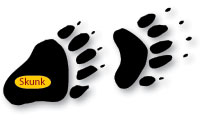 Beyond footprints
Beyond footprints
In addition to footprints, look for these telltale signs:
- Bent grass, broken twigs, and damaged vegetation suggest a big animal -- or a group of animals—crashing through vegetation. Bent vegetation shows the direction of travel.
- Smashed grass can indicate an animal’s resting place.
Scat, or droppings, identifies herbivores, carnivores, and omnivores. Take a stick and poke at the contents to see what they’ve been eating: husks of seeds, berry skins, or grasses (herbivore); bones, fur, and feathers (carnivore); or a mixture (omnivore).
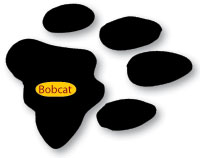 Big cats and bears rub bark and scratch trees to mark territory. These marks might be six feet up a tree.
Big cats and bears rub bark and scratch trees to mark territory. These marks might be six feet up a tree.
Stalking
Getting close enough to watch animals in their natural habitat is a real thrill. But your first priority should be safety:
- Don’t stalk alone. Always follow Scouting’s buddy system
and have at least one
other person accompany you when you are involved in any outdoor activity. Solo stalkers make less noise, but be sure you have at least one partner a few steps behind.
-
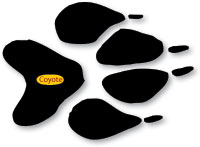 Don’t get too close. Animals can be dangerous when they feel cornered. Don’t be fooled by the docile appearance of moose, buffalo, or even deer. They can become aggressive if threatened. Many animals in national parks lose their fear of humans -- making them potentially dangerous.
Don’t get too close. Animals can be dangerous when they feel cornered. Don’t be fooled by the docile appearance of moose, buffalo, or even deer. They can become aggressive if threatened. Many animals in national parks lose their fear of humans -- making them potentially dangerous.
- Be sensible. Don’t stalk something that might be interested in stalking you—such as a mountain lion or a bear.
- Never get between a mother and her cub. Mother bears are especially volatile.
- Never feed wild animals or lure them with food.
- Don’t become so obsessed with the chase that you forget where you are. Notice landmarks or use a GPS that can lead you back from where you came.
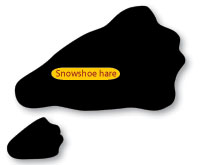 In North America, large grazers -- white-tailed and mule deer, antelope, mountain goats, bighorn sheep, and elk -- reward tracking efforts with great photos. To find them:
In North America, large grazers -- white-tailed and mule deer, antelope, mountain goats, bighorn sheep, and elk -- reward tracking efforts with great photos. To find them:
- Ask park and wildlife rangers. Animals often follow established routes. Water sources, game trails, and pasture areas are good places to sit quietly with your eyes open and your camera at hand.
- Animals easily disappear into the background. Sweep your eyes over a large area looking for movement.
- Track in morning or evening, when the slanted light makes tracks easier to see. Many animals are more active at these times.
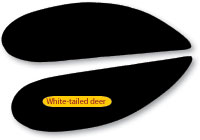 Become invisible. Hide behind hedges, trees, or rocks, and stay in the shadows. If a grazing animal looks up suddenly, freeze. Don’t resume moving until the animal relaxes.
Become invisible. Hide behind hedges, trees, or rocks, and stay in the shadows. If a grazing animal looks up suddenly, freeze. Don’t resume moving until the animal relaxes.
- The condition of the tracks will tell you how fresh the trail is. Are they in dried mud or damp earth? How precise and sharp are the edges?
- Practice stalking techniques. Avoid stepping on leaves or twigs. Expert trackers walk in slow motion, placing their feet down one part at a time, and transferring the weight slowly so as not to make a sound.
- Stay downwind. If you are upwind when you find the animal, circle around in a wide arc. Don’t approach the animal until you feel the wind in your face.
Tools for learning
Binoculars are rated by two numbers, magnification and lens size. For wildlife viewing, 7 x 35 to 8 x 42 is a good choice. Bigger lenses are more difficult to keep steady. For outdoor use, compact binoculars are easier to carry; waterproof ones are a must.
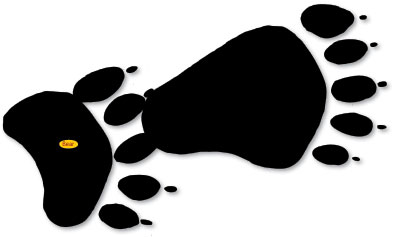 A magnifying glass (there may be one on your compass)
can enlarge the track’s details.
A magnifying glass (there may be one on your compass)
can enlarge the track’s details.
Cameras: A zoom lens can turn a so-so picture into a great one. You can also use a macro lens to photograph tracks up close.
“Make sure that you have something to indicate the track’s exact size, including a ruler, a coin, or even a finger in the picture to add scale,” says Levine. “Track size is an important part of identification.”
Using plaster molds of tracks is a good way to study and learn to recognize tracks. But Levine cautions that “making casts in the wild is difficult because conditions are rarely perfect.” She recommends using molds available from Acorn Naturalists (www.acornnaturalists.com) to create casts of animal feet, which can then be used to make sample tracks.
Journaling and drawing: We remember what we concentrate on. Writing up your experiences and sketching them will help lock them in your memory.
That’s the way Sir Robert Baden-Powell did it. The founder of Scouting was a premier tracker who spent countless hours sketching his wilderness impressions.
Karen Berger is the author of Backpacking and Hiking (BSA No. 34354, $20). Visit her Web site at www.hikerwriter.com.
Cover Answers
(1) Muskrat (hind foot) |
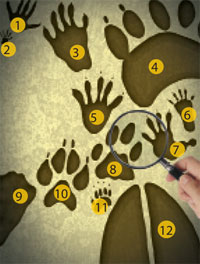 Here are the identities of the tracks illustrated on our cover. Tracks may not be shown in proportion to their actual size.
Here are the identities of the tracks illustrated on our cover. Tracks may not be shown in proportion to their actual size.